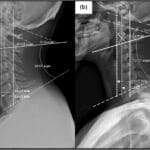This guide provides comprehensive information about laryngectomy tubes, their purpose, care, and the adjustments involved in life after laryngectomy surgery. Whether you’re preparing for surgery or already living with a laryngectomy, this guide offers the support and knowledge you need.
Understanding Laryngectomy Tubes
A laryngectomy is the surgical removal of the larynx (voice box), often necessary due to cancer, trauma, or other serious conditions. This procedure creates a permanent opening in the front of your neck called a stoma, which becomes your new airway. A laryngectomy tube is essential for maintaining this stoma and facilitating breathing.
What is a Laryngectomy Tube?
A laryngectomy tube, typically made of flexible silicone, is placed into the stoma to keep it open and prevent closure during the initial healing phase after surgery. This ensures a clear pathway for air to reach your lungs. The tube is usually temporary, acting like scaffolding while the stoma strengthens. It’s important to distinguish between a laryngectomy tube and a tracheostomy tube, which is often used for temporary airway access during surgery or critical illness and is positioned lower in the neck. Learn more about lymphedema life expectancy.
Why is a Laryngectomy Tube Necessary?
After a laryngectomy, the normal route for breathing through the nose and mouth is altered. The laryngectomy tube ensures a patent airway through the stoma, enabling you to breathe. While some laryngectomy tubes may also help with speech using a voice prosthesis, the primary function is maintaining the airway.
Caring for Your Laryngectomy Tube and Stoma
Proper care of your laryngectomy tube and stoma is crucial to prevent infection and other complications.
Tube and Stoma Care Procedures
Your healthcare team will provide detailed instructions on cleaning, maintaining, and changing the tube. This typically involves regular cleaning with soap and water, suctioning if necessary to remove mucus, and changing the neck ties that secure the tube. Consistent stoma care includes cleaning the skin around the stoma, keeping it moisturized, and changing dressings as directed.
Importance of Hygiene
Maintaining a clean stoma and tube is paramount to prevent infections. Always wash your hands thoroughly before touching your stoma or tube. A dry stoma is more prone to infection, so use a saline solution or a doctor-recommended moisturizing product. Avoid smoking, as it irritates the stoma, increases infection risk, and can impede healing. If you’re interested in the mulberry bush, check out our guide.
Life After Laryngectomy: Adapting and Thriving
Adjusting to life after a laryngectomy requires time, patience, and support.
Communication
Learning new ways to communicate is a significant part of this adjustment. Options include a voice prosthesis, esophageal speech (learning to speak using your esophagus), or using writing or sign language. A speech therapist can help you explore these options and find the best fit for you.
Daily Life Adjustments
Daily activities like showering and swimming require precautions to keep the stoma dry. Support groups and resources, such as speech therapists and counselors, are invaluable during this transition. Connecting with others who understand your experience can make a profound difference.
Potential Complications and Long-Term Care
While complications are rare with proper care, it’s important to be aware of potential issues like infection, bleeding, blockage, or displacement of the tube. Regular check-ups with your healthcare team are essential for monitoring your stoma, tube, and overall health. There is debate among some experts that the stoma can shrink over time, potentially affecting breathing and the use of a voice prosthesis. This reinforces the importance of ongoing medical monitoring and appropriate interventions.
Types of Laryngectomy Tubes and Ongoing Research
Several types of laryngectomy tubes exist, each designed for specific purposes. Some have a cuff, a small inflatable balloon that creates a seal, while others are cuffless and rely on a close fit within the stoma. Your doctor will determine the appropriate type and size for you. Ongoing research focuses on improving tube design, materials, and care practices to enhance comfort, reduce complications, and improve long-term outcomes for patients. Some experts believe new biocompatible materials and stoma creation techniques might further minimize tissue irritation.
Conclusion: Embracing Your Journey
Living with a laryngectomy tube is a significant adjustment, but with knowledge and support, you can live a full and meaningful life. Understanding tube and stoma care, knowing potential complications, and connecting with support systems empowers you to manage your health effectively. Remember, it’s a journey, and taking it one step at a time is okay. Medical information constantly evolves, so engage in open communication with your healthcare team. They are there to guide and support you through every step.
- Georgia Platform: A Southern Strategy, 1850s - March 31, 2025
- How many weeks is 40 days: Quick Conversion Guide for Accurate Results - March 31, 2025
- How many feet is 300 meters? 984 Feet: Understand Length Conversions Easily - March 31, 2025

















2 thoughts on “Laryngectomy Tubes: A Comprehensive Guide to Types, Care, and Life After Surgery”
Comments are closed.